ॐ श्री गुरुभ्यो नमः ॐ श्री शिवानन्दाय नमः ॐ श्री चिदानन्दाय नमः ॐ श्री दुर्गायै नमः
Source of all Images in this Blog-post : Google Images : ‘Google Image Search’ will reveal the multiple sources of every single image shared in this Blog. For more details, kindly see ‘Disclaimer‘
A Gurdwara, meaning ‘Door to the Guru‘ is a place of assembly and worship for the Sikhs (The follower of India’s Sikh Faith ). Sikhs also refer to Gurdwaras as Gurdwara Sahib.
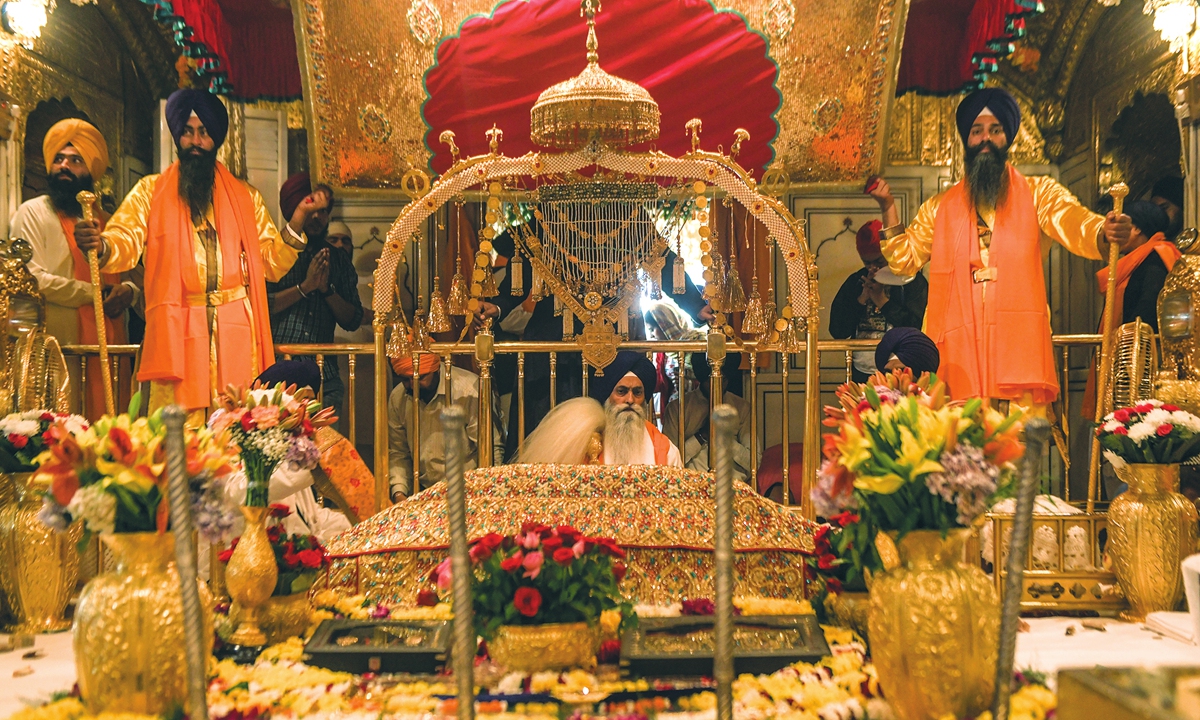
People from all faiths are welcome in Gurdwaras. Each Gurdwara has a Darbar Sahib where the current and everlasting guru of the Sikhs, the scripture Guru Granth Sahib, is placed on a Takhat (an elevated throne) in a prominent central position.
The Raagis (One who sings Ragas) recite, sing, and explain the verses from the Guru Granth Sahib, in the presence of the congregation.

All Gurdwaras have a Langar hall, where people can eat free vegetarian food served by volunteers at the Gurdwara.
Gurudwaras may also have a medical facility room, library, nursery, classroom, meeting rooms, playground, sports ground, a gift shop, and finally a repair shop.
A Gurdwara can be identified from a distance by tall flagpoles bearing the Nishan Sahib, the Sikh flag.
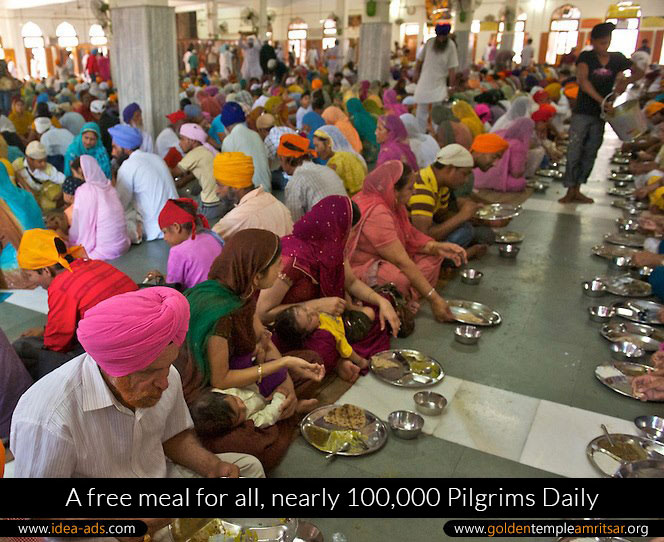
The best-known Gurdwaras are in the Darbar Sahib complex in Amritsar, Punjab, including Darbar Sahib, the spiritual center of the Sikhs and Akal Takht, the political center of the Sikhs.
Explore & Watch More Videos on Live Kirtan in Darbar Sahib Amritsar on YouTube
Here are some of the sacred Gurudwaras of India, which attract countless devout pilgrims every year :
The Golden Temple, also known as Harmandir Sahib, meaning ‘Abode of God’ or Darbār Sahib, meaning ‘Exalted Court’ is a Gurdwara located in the city of Amritsar, Punjab, India. It is the preeminent spiritual centre and pilgrim place of Sikhism.
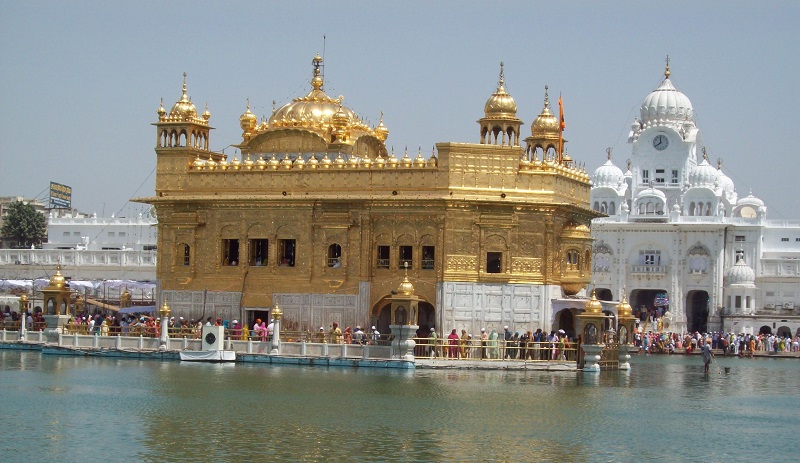
A Glimpse of Golden Temple, Harmandir Sahib Amritsar, Through a Bunch of Google Images
The Gurdwara is built around a man-made pool (Sarovar) that was completed by the fourth Sikh Guru, Guru Ram Das in 1577.
Guru Arjan, the fifth Guru of Sikhism, requested Sai Mir Mian Mohammed, a Muslim Pir of Lahore, to lay its foundation stone in 1589.
In 1604, Guru Arjan placed a copy of the Adi Granth in Harmandir Sahib.
The Gurdwara was repeatedly rebuilt by the Sikhs after it became a target of persecution and was destroyed several times by the Mughal and invading Afghan armies.
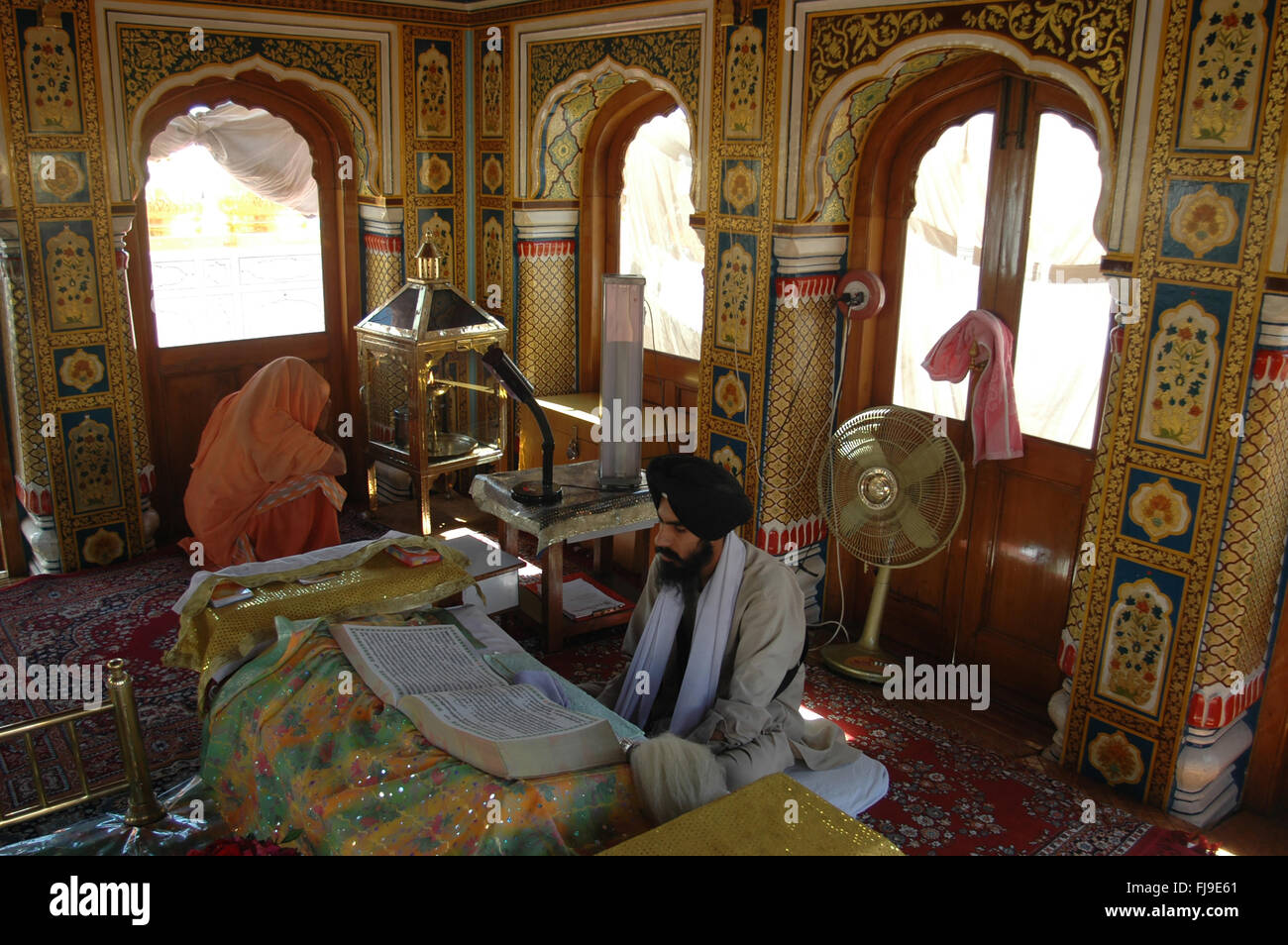
Maharaja Ranjit Singh after founding the Sikh Empire, rebuilt it in marble and copper in 1809, overlaid the Sanctum with Gold foil in 1830. This has led to the name the Golden Temple today.
The Golden Temple is spiritually the most significant shrine in Sikhism. It became a center of the Singh Sabha Movement between 1883 and 1920s, and the Punjabi Sabha Movement between 1947 and 1966.
In the early 1980s, the Gurdwara became a center of conflict between the Indian Government led by Indira Gandhi, some Sikh groups and a movement led by Jarnail Singh Bhindranwale.
In 1984, Indira Gandhi sent in the Indian Army as part of Operation Blue Star, leading to deaths of over 1,000 Sikh soldiers and civilians, as well as causing much damage to the Gurdwara and the destruction of Akal Takht. The Gurdwara complex was rebuilt again after the 1984 damage.
The Golden Temple is an open house of worship for each and everyone visiting the sacred shrine, from every walk of life and all religious and faiths.
It has a square plan with four entrances, has a circumambulation path around the pool.
The complex is a collection of buildings around the Sanctum and the pool. One of these is Akal Takht, the chief center of religious authority of Sikhism.
Additional buildings include a clock tower, the offices of Gurdwara Committee, a Museum and a Langar. Langar is a free Sikh community run kitchen that serves a simple vegetarian meal to all visitors without discrimination.

Over 100,000 people visit the holy shrine daily for worship. The Gurdwara complex has been nominated as a UNESCO World Heritage Site, and its application is pending on the tentative list of UNESCO.
Takht Sri Patna Sahib, Patna
Takht Sri Patna Sahib also known as Harmandir Sahib, is a Gurdwara in the neighbourhood of Patna Sahib, India. It was to commemorate the birthplace of Guru Gobind Singh, the tenth Guru of the Sikhs on December 1666.
This Gurudwara was built by Maharaja Ranjit Singh (1780-1839), the first Maharaja of the Sikh Empire, who also built many other Gurdwaras in the Indian subcontinent.
The current shrine of Patna Sahib or Takht Sri Harmandirji Sahib was built in the 1950s.
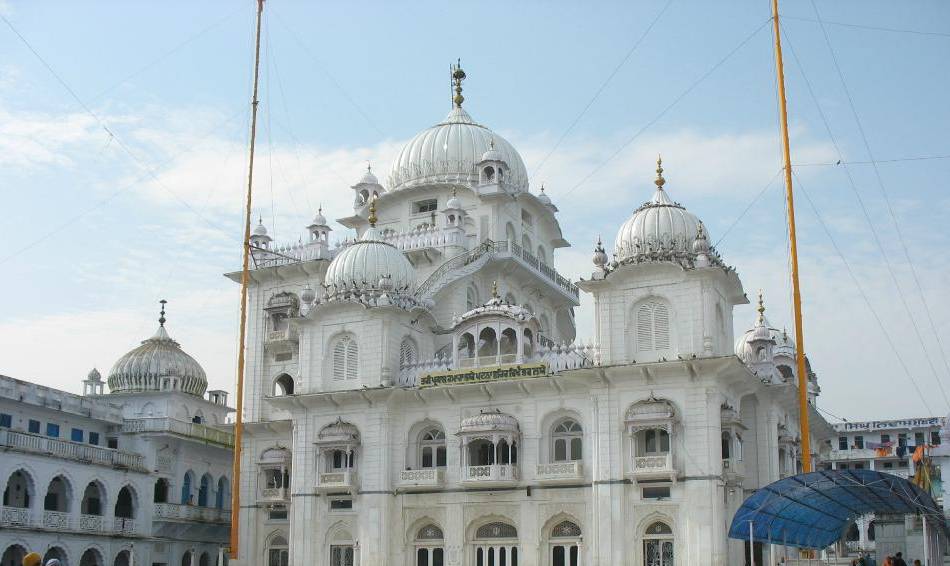
Guru Gobind Singh, the tenth Sikh Guru, was born in Patna, Bihar, on 22 December 1666. He also spent his early years here before moving to Anandpur Sahib.
Besides being the birthplace of Guru Gobind Singh, Patna was also honored by visits from Guru Nanak Dev Ji as well as Guru Tegh Bahadur Ji.
Patna Sahib railway station, a railway station with same name located nearby, is connected to many metropolitan cities of India by the Howrah-Delhi Main Line.
Gurudwara Bangla Sahib
Gurudwara Bangla Sahib is one of the most prominent Sikh Gurdwara, or Sikh Abode of Worship in Delhi. It’s known for its association with the eighth Sikh Guru, Guru Har Krishan, as well as the holy river inside its complex, known as the ‘Sarovar’.
It was first built as a small shrine by Sikh General Sardar Baghel Singh in 1783, on the bungalow donated by King Raja Jai Singh of Amer.
King Raja Jai Singh supervised the construction of nine Sikh shrines in Delhi in the same year during the reign of Mughal Emperor, Shah Alam II.

Bangla Sahib is situated near Connaught Place, New Delhi on Baba Kharak Singh Marg and it is instantly recognisable by its golden dome and tall flagpole, Nishan Sahib. Located next to this sacred shrine is the Sacred Heart Cathedral.
Gurdwara Bangla Sahib was originally a bungalow belonging to Raja Jai Singh, an Indian ruler in the seventeenth century.
This bungalow was known as Jaisinghpura Palace. It’s in Jaisingh Pura, an historic neighbourhood demolished to make way for the Connaught Place, shopping Complex.
The eighth Sikh Guru, Guru Har Krishan resided here during his stay in Delhi in 1664. During that time, there was a smallpox and cholera epidemic, and Guru Har Krishan Ji helped the suffering by giving aid and fresh water from the well in this house.
Soon he too contracted the illness and eventually died on 30 March 1664.
A small tank was later constructed by Raja Jai Singh over the well, its water is now revered as having healing properties and is taken by Sikhs throughout the world back to their homes.
The Gurdwara and its Sarovar are now a place of great reverence for the Sikhs, and a place for special congregation on birth-anniversary of Guru Har Krishan.
The grounds include the Gurudwara, a kitchen, a large sacred pond, a school, and an art-gallery.
As with all Sikh Gurdwaras, the concept of Langar is practised, and everyone regardless of caste, race or religion may dine in the Gurdwara kitchen (Langar hall). The Langar (food) is prepared by Gursikhs who work there and also by volunteers who like to help out.

At the Gurdwara, visitors are requested to cover their head and not to wear shoes.
Assistance to foreigners and visitors with Guides, head scarves, and shoe-minding service can be found inside the compound and are available free of charge.
Anyone can volunteer to help keep the shoes in the shoe-minding room, and cleaning the precincts of the Gurudwara.
The complex also houses a higher secondary school, Baba Baghel Singh Museum, a library, and a hospital. The Gurudwara and the Langar hall are now air-conditioned.
A new ‘Yatri Niwas’ (Travellers Hostel), and a multi-level parking space have been constructed. In Yatri Niwas toilet facilities are available.
The space around the back entrance to the Gurudwara is also being spruced up, so as to give a better view from the roadside.
Gurudwara Paonta Sahib
Gurudwara Paonta Sahib is a renowned Gurudwara in Paonta Sahib in the District of Sirmour in Himachal Pradesh.
This Gurdwara was built in memory of Guru Gobind Singh ji, the tenth Guru of the Sikhs.
The Gurdwara enjoys a high historic and religious importance among the followers of the Sikh religion world over. The Gurudwara has a palanquin – a Palki – made of pure gold, donated by the devotees.
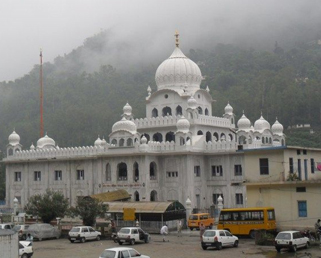
Shri Talab Asthan and Shri Dastar Asthan are the vital places inside the Sikh shrine. Shri Talab Asthan is used for disbursing salaries and Shri Dastar Asthan is used for organizing the turban tying competitions.
A legendary temple is also attached to the Gurudwara which is rebuilt recently in the vicinity of Gurudwara compound. The temple is devoted to Goddess Yamuna.
Kavi Darbar, a prominent place near the Gurudwara is the venue for holding the poetry competitions.
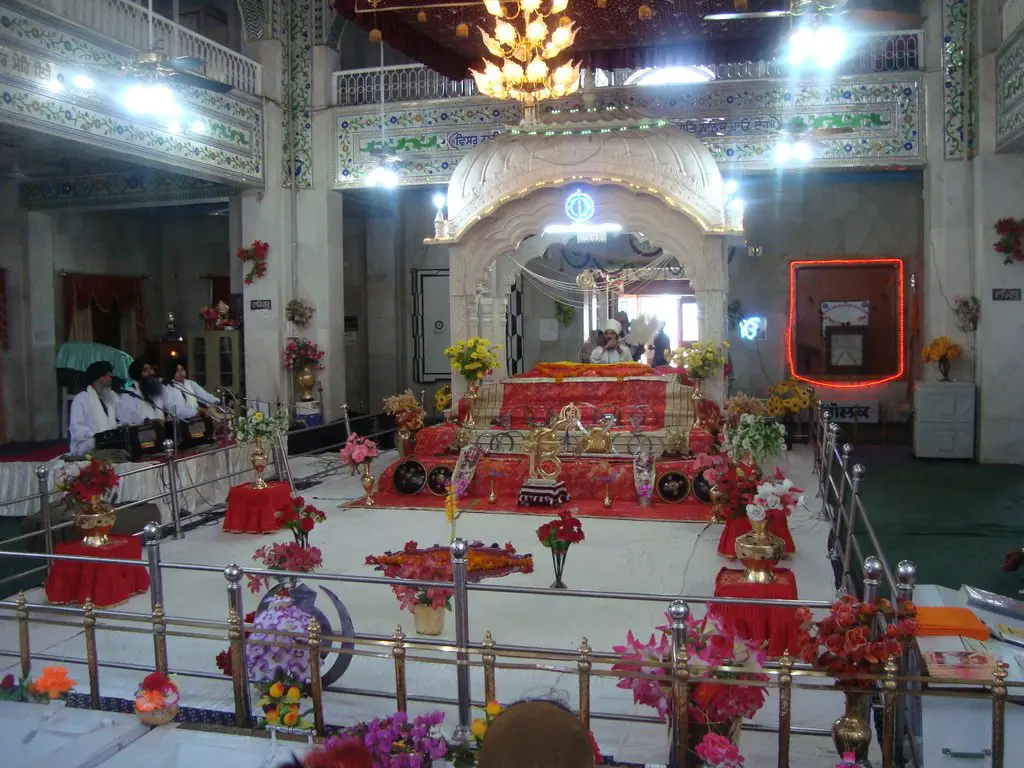
The weapons and pens used by Guru Gobind Singh Ji are displayed in a museum near the Paonta Sahib Gurudwara. The Gurudwara is visited by tourists from different states.
The site is situated on the bank of River Yamuna. This Gurudwara serves Langar (Parshada)for all. The pure beauty of Gurudwara signifies that God is one and we all are His children.
Another place of religious and historical importance is the Gurdwara built at Bhangani Sahib, about 1 km from Gurdwara Tir Garhi Sahib. With its proximity to the river Yamuna, the whole area presents a picturesque sight.
Anandpur Sahib
Anandpur Sahib is in Punjab state of India, close to the Himachal Pradesh border. It is about 31 kilometres (19 mi) north of Ropar (Rupnagar) and 29 kilometres (18 mi) south of Nangal.
Anandpur has been significant to the Sikh history. These historical locations now feature the following Gurdwaras:
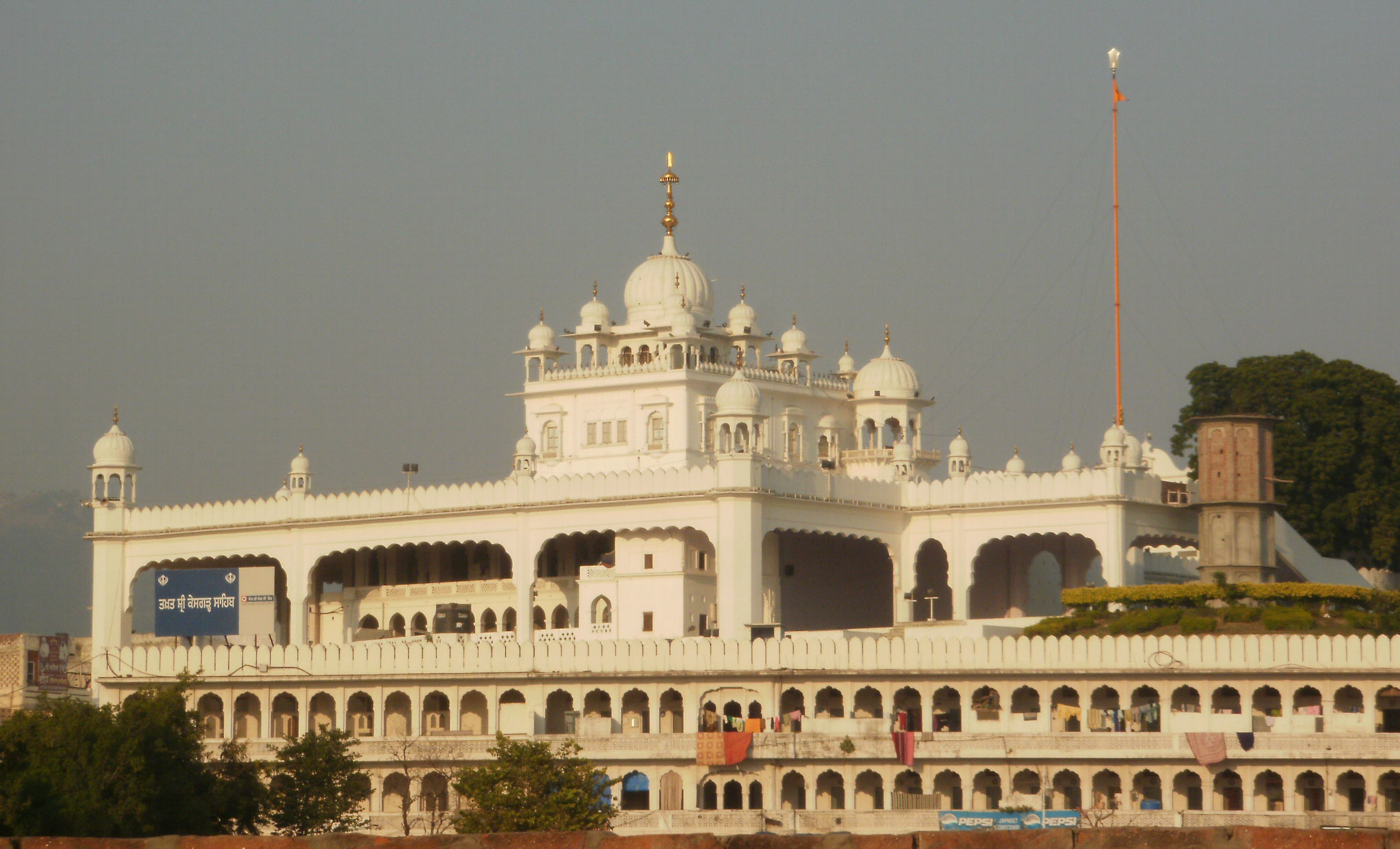
1.Gurudwara Takht Sri Kesgarh Sahib:
This is the principal Sikh temple in the town. It marks the birthplace of Khalsa and one of the five religious authorities (Five Takhts) of Sikhism.
Standing on a hillock, the present complex was built between 1936 and 1944. The plan of the building is a square set inside a 30 square metres (320 sq ft) square courtyard.
In this complex are the Takht’s office and a Gurdwara. The Gurdwara has a 16 square metres (170 sq ft) square hall, inside which is 5.5 square metres (59 sq ft) square sanctum with the Sikh scripture and old weapons used by Guru Gobind Singh’s Khalsa, signifying the miri and piri aspects of the Sikh faith.
The dome of the Gurdwara is fluted lotus. The lower levels of the complex has a langar (free community kitchen run by volunteers), a 55 square metres (590 sq ft) square divan hall, and a row of rooms for pilgrims called the Dashmesh Nivas.
Nearby is an 80 square metres (860 sq ft) square sarovar (holy water tank) for pilgrims to take their pilgrimage dip.
2.Gurdwara Sisganj:
Built by Ranjit Singh to mark the place where Guru Tegh Bahadur’s severed head after his execution in Delhi, was cremated in 1675.
Guru Gobind Singh had a platform and shrine built on the site of the cremation. He entrusted an Udasi Sikh named Gurbakhsh to protect this shrine when he left Anandpur in 1705.
The Gurdwara was enlarged and renovated in the 1970s. This Sikh temple features a pinnacled dome under which is the Sanctum. Around the Sanctum is a 4.5 metres (15 ft) wide circumambulation path with carved marble pillars.
3.Gurudwara Bhora Sahib:
A three-storey domed Gurdwara which was the residence of Guru Teg Bahadur.
The basement level has a room with a 1.5 square metres (16 sq ft) platform that is 0.5 metres (1 ft 8 in) high, where the 9th Guru used to meditate and compose hymns. It now houses the Guru Granth Sahib.
4.Gurudwara Thara Sahib:
A 5 square metres (54 sq ft) platform in the front of Damdama Sahib where Bhai Kripa Ram Dutt along with other 16 Kashmiri Pandits sought his help in 1675.
They came to seek protection from Aurangzeb and requested Guru Teg Bahadur to save them from forcible conversions to Islam.
5.Gurudwara Akal Bunga Sahib:
This Gurdwara is opposite to Gurdwara Sis Ganj Sahib. It was built by a pujari named Man Singh in 1889.
This is the place where Guru Gobind Singh after the cremation of the ‘Head of Guru Teg Bahadur’ had delivered a sermon after the beheading of his father Guru Teg Bahadur in Delhi.
6.Gurudwara Damdama Sahib:
Close to Gurdwara Sisganj Sahib, it shares the compound with Anandpur Bhora Sahib and Thara Sahib, which is also called Guru ke Mahal.
This Gurdwara remembers the residential quarters of Guru Tegh Bahadur. He used to welcome and counsel Sikh Sangats who would visit him. Guru Gobind Singh was designated as the tenth Guru in this Gurudwara.
The octagonal domed building here was built in 20th century.
7.Gurudwara Manji Sahib / Gurudwara Dumalgarh Sahib :
This Gurdwara is on the northern side of Takht Shri Keshgarh Sahib. Here, Guru Gobind Singh used to train his sons. This place was used as playground. Wrestling and other competitions were held here.
8.Gurdwara Shaeedhi Bagh:
This Gurdwara is located on the road between Takhat Shri Kesh Garh Sahib & Kila Anand Garh Sahib.
In early days of eighteenth century this place was a big garden during skirmishes between Sikh Army and Bilaspur Army, many Sikh soldiers laid their lives here in this garden. Hence the sacred place is known as Gurdwara Shaeedhi Bagh.
9.Gurdwara Mata Jit Kaur:
Mata Jit Kaur, wife of Guru Gobind Singh had a vision ‘Divya-drishti’ of the atrocities and cruelties on Sikhs and young sons. She was cremated near Quilla Holgarh Sahib. This place is now termed Gurdwara Mata Jit Kaur.
10.Gurdwara Guru Ka Mahal:
It was the first building of Chak Nanaki, Anandpur Sahib. The foundation stone was laid here.
Guru Gobind Singh, Mata Gujri, Mata Jit Kaur, Mata Sundar Kaur, Mata Sahib Kaur and four sons of the Guru had been living here. Jujhar Singh, Zorawar Singh and Fateh Singh were born here.
Gurdwara Bhora Sahib, Gurdwara Manji Sahib and Gurdwara Damdama Sahib are part of Gurdwara Guru Ka Mahal Complex.
Gurdwara Baba Bakala Sahib, Punjab
Gurdwara Baba Bakala Sahib is a prominent Sikh Gurdwara in Baba Bakala, Punjab, India and it is known for its association with the 9th Sikh Guru, Guru Tegh Bahadur, Mata Ganga and Baba Makhan Shah Lubana.
The main complex contains 4 Gurdwaras. The Gurdwara’s Sarovar is located on the left hand-side of the bazaar leading up to the main Gurdwara complex. Opposite that there are also lodging facilities available for pilgrims.
Gurdwara Manji Sahib
After finding Guru Tegh Bahadur, the Sikh congregation set up the Deewan here. While preaching on the Deewan, the Shia Masand fired at the Guru and the bullet scraped along the Guru’s dastaar without causing any harm.
Gurdwara Bhora Sahib
This is the 9-storey building built above the cellar where Guru Tegh Bahadur meditated in solitude for 26 years, 9 months and 13 days and also where Baba Makhan Shah Lubaba stood and announced that he had found the true Guru.
Gurdwara Darbar Sahib
This is the place where in August 1664 the Sikh Sangat arrived in Bakala and anointed Tegh Bahadur as the ninth guru of Sikhs. The Sangat was led by Diwan Durga Mal, and a ‘Tilak ceremony’ was performed by Baba Gurditta on Tegh Bahadur, formally conferring Guruship onto him.
Gurdwara Seesh Mahal
Here Mata Ganga, consort of Guru Arjan Dev, mother of Guru Hargobind and grandmother of Guru Tegh Bahadur passed away.
Gurudwara Goindwal Sahib
Gurdwara Sri Tarn Taran Sahib
Gurdwara Sri Tarn Taran Sahib is a Gurdwara established by the fifth Guru, Guru Arjan Dev, in the city of Tarn Taran Sahib, Punjab, India. The site has the distinction of having the largest sarovar (water pond) of all the Gurdwaras.
It is famous for the monthly gathering of pilgrims on the day of Amavas ( new moon night). It is near Harmandir Sahib, Amritsar.

Gurudwaras in Sirhind-Fatehgarh Sahib
- Gurudwara Fatehgarh Sahib
- Gurdwara Jyoti Sarup
- Gurdwara Shahid Ganj
- Gurdwara patshahi Chevin
- Gurdwara moti ram mehra ji
Gurdwara Fatehgarh Sahib
Gurdwara Fatehgarh Sahib is a Sikhgurdwara or place of worship in the city of Fatehgarh Sahib in the Indian state of Punjab.
The Gurdwara marks the 1710 conquest of the city by the Sikhs under the leadership of Banda Singh Bahadur. Sikhs captured the area and razed the fort built by Ferozshah Tughlaq to the ground.
Gurudwara Shri Hemkund Sahib
Hemkund Sahib formally known as Gurudwara Shri Hemkund Sahib Ji is a Sikh place of worship and pilgrimage site in Chamoli district, Uttarakhand, India.
The holy shrine is devoted to Guru Gobind Singh (1666–1708), the tenth Sikh Guru, and finds mention in Dasam Granth, a work presumed dictated by Guruji himself.
With its setting of a glacial lake surrounded by seven mountain peaks, each adorned by a Nishan Sahib on its cliff, it is according to the Survey of India located in the Himalayas at an elevation of 4,160 meters (13,650 feet).
It is approached from Govindghat on the Rishikesh–Badrinath highway. The main town near Gobindghat is Joshimath. The altitude of the lake at Hemkund is approximately 13,650 feet (4,160 m).
Takhat Sachkhand Sri Hazur Abchal Nagar Sahib, Nanded

